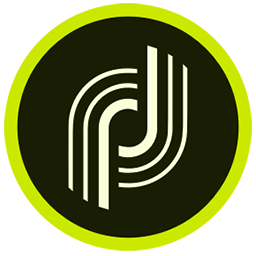

This article will illustrate the following flow and show the corresponding SOAP calls.
We'll create (or update) an external acount for a FDA database. You need the server, port, database and schema name, user and password.
The first step is to encrypt the password. The xtk:persist#EncryptPassword API will by used to encrypt the password.
<SOAP-ENV:Envelope xmlns:xsd='http://www.w3.org/2001/XMLSchema' xmlns:xsi='http://www.w3.org/2001/XMLSchema-instance' xmlns:ns='urn:xtk:persist' xmlns:SOAP-ENV='http://schemas.xmlsoap.org/soap/envelope/'>
<SOAP-ENV:Body>
<EncryptPassword xmlns='urn:xtk:persist' SOAP-ENV:encodingStyle='http://schemas.xmlsoap.org/soap/encoding/'>
<__sessiontoken xsi:type='xsd:string'></__sessiontoken>
<strDecrypted xsi:type='xsd:string'>admin</strDecrypted>
</EncryptPassword>
</SOAP-ENV:Body>
</SOAP-ENV:Envelope>
The API will return the encrypted password as follows.
<?xml version='1.0'?> <SOAP-ENV:Envelope xmlns:xsd='http://www.w3.org/2001/XMLSchema' xmlns:xsi='http://www.w3.org/2001/XMLSchema-instance' xmlns:ns='urn:xtk:session' xmlns:SOAP-ENV='http://schemas.xmlsoap.org/soap/envelope/'> <SOAP-ENV:Body> <EncryptPasswordResponse xmlns='urn:xtk:session' SOAP-ENV:encodingStyle='http://schemas.xmlsoap.org/soap/encoding/'> <pstrEncrypted xsi:type='xsd:string'>@S/U/D7xOdZfRAwf3+WRM3w==</pstrEncrypted> </EncryptPasswordResponse> </SOAP-ENV:Body> </SOAP-ENV:Envelope>
Now the external account can be created using the xtk:persist#Write API. Give it a name, make sure it's active and set all connection parameters as follows. Make sure you provide the encrypted password
<SOAP-ENV:Envelope xmlns:xsd='http://www.w3.org/2001/XMLSchema' xmlns:xsi='http://www.w3.org/2001/XMLSchema-instance' xmlns:ns='urn:xtk:persist' xmlns:SOAP-ENV='http://schemas.xmlsoap.org/soap/envelope/'>
<SOAP-ENV:Body>
<Write xmlns='urn:xtk:persist' SOAP-ENV:encodingStyle='http://schemas.xmlsoap.org/soap/encoding/'>
<__sessiontoken xsi:type='xsd:string'></__sessiontoken>
<domDoc xsi:type='ns:Element' SOAP-ENV:encodingStyle='http://xml.apache.org/xml-soap/literalxml'>
<extAccount xtkschema="nms:extAccount"
name="pg2" label="Postgres (2)" provider="PostgreSQL" type="7" active="1"
server="localhost" port="" dbName="fda" dbSchema="public"
account="postgres" password="@S/U/D7xOdZfRAwf3+WRM3w=="
timezone="_server_" unicodeData="1">
</extAccount>
</domDoc>
</Write>
</SOAP-ENV:Body>
</SOAP-ENV:Envelope>
The API does not return anything. Note the the name attribute is a unique key in the nms:account schema. So the same API call can be used to update the account.
Campaign provides the nms:extAccount#TestAccount API to test the connection. Unfortunately, this API cannot take an extAccount id, but it needs to be passed all the credentials settings again. Note that the password is still encrypted.
<SOAP-ENV:Envelope xmlns:xsd='http://www.w3.org/2001/XMLSchema' xmlns:xsi='http://www.w3.org/2001/XMLSchema-instance' xmlns:ns='urn:xtk:persist' xmlns:SOAP-ENV='http://schemas.xmlsoap.org/soap/envelope/'>
<SOAP-ENV:Body>
<TestAccount xmlns='urn:xtk:persist' SOAP-ENV:encodingStyle='http://schemas.xmlsoap.org/soap/encoding/'>
<__sessiontoken xsi:type='xsd:string'></__sessiontoken>
<param xsi:type='xsd:byte'>7</param>
<param xsi:type='xsd:boolean'>1</param>
<param xsi:type='xsd:string'>PostgreSQL:localhost</param>
<param xsi:type='xsd:string'>postgres</param>
<param xsi:type='xsd:string'>@S/U/D7xOdZfRAwf3+WRM3w==</param>
<param xsi:type='xsd:string'>fda</param>
<param xsi:type='xsd:string'>NChar=0;unicodeData=1;timezone=_server_;dbSchema=public;fileMethod=uploadFile;filePath=;</param>
<param xsi:type='xsd:string'>pg2</param>
<param xsi:type='xsd:boolean'>0</param>
<param xsi:type='xsd:string'></param>
<param xsi:type='xsd:string'></param>
<param xsi:type='xsd:string'></param>
<param xsi:type='xsd:string'></param>
</TestAccount>
</SOAP-ENV:Body>
</SOAP-ENV:Envelope>
This should return a string with version information.
<?xml version='1.0'?> <SOAP-ENV:Envelope xmlns:xsd='http://www.w3.org/2001/XMLSchema' xmlns:xsi='http://www.w3.org/2001/XMLSchema-instance' xmlns:ns='urn:nms:extAccount' xmlns:SOAP-ENV='http://schemas.xmlsoap.org/soap/envelope/'> <SOAP-ENV:Body> <TestAccountResponse xmlns='urn:nms:extAccount' SOAP-ENV:encodingStyle='http://schemas.xmlsoap.org/soap/encoding/'> <pstrServer xsi:type='xsd:string'>localhost</pstrServer> <pstrDbmsVer xsi:type='xsd:string'>Database server version 'PostgreSQL 12.2, compiled by Visual C++ build 1914, 64-bit'.</pstrDbmsVer> <pstrWarehouse xsi:type='xsd:string'></pstrWarehouse> <pstrTestDuration xsi:type='xsd:string'>Test connection took: 0 ms</pstrTestDuration> </TestAccountResponse> </SOAP-ENV:Body> </SOAP-ENV:Envelope>
You can also use a query to get information about the external account.
<SOAP-ENV:Envelope xmlns:xsd='http://www.w3.org/2001/XMLSchema' xmlns:xsi='http://www.w3.org/2001/XMLSchema-instance' xmlns:ns='urn:xtk:persist' xmlns:SOAP-ENV='http://schemas.xmlsoap.org/soap/envelope/'>
<SOAP-ENV:Body>
<ExecuteQuery xmlns='urn:xtk:queryDef' SOAP-ENV:encodingStyle='http://schemas.xmlsoap.org/soap/encoding/'>
<__sessiontoken xsi:type='xsd:string'></__sessiontoken>
<entity xsi:type='ns:Element' SOAP-ENV:encodingStyle='http://xml.apache.org/xml-soap/literalxml'>
<queryDef fullLoad="true" operation="get" schema="nms:extAccount" startPath="/" xtkschema="xtk:queryDef">
<select>
<node expr="@id"/>
<node expr="@name"/>
<node expr="@label"/>
<node expr="@provider"/>
<node expr="@active"/>
<node expr="@server"/>
<node expr="@port"/>
<node expr="@dbName"/>
<node expr="@dbSchema"/>
<node expr="@account"/>
<node expr="@password"/>
<node expr="@timezone"/>
<node expr="@unicodeData"/>
</select>
<where>
<condition expr="@name='pg2'"/>
</where>
</queryDef>
</entity>
</ExecuteQuery>
</SOAP-ENV:Body>
</SOAP-ENV:Envelope>
It will return something like this
<?xml version='1.0'?> <SOAP-ENV:Envelope xmlns:xsd='http://www.w3.org/2001/XMLSchema' xmlns:xsi='http://www.w3.org/2001/XMLSchema-instance' xmlns:ns='urn:xtk:queryDef' xmlns:SOAP-ENV='http://schemas.xmlsoap.org/soap/envelope/'> <SOAP-ENV:Body> <ExecuteQueryResponse xmlns='urn:xtk:queryDef' SOAP-ENV:encodingStyle='http://schemas.xmlsoap.org/soap/encoding/'> <pdomOutput xsi:type='ns:Element' SOAP-ENV:encodingStyle='http://xml.apache.org/xml-soap/literalxml'> <extAccount account="postgres" active="1" dbName="fda" dbSchema="public" id="4510" label="Postgres (2)" name="pg2" password="@S/U/D7xOdZfRAwf3+WRM3w==" port="" provider="PostgreSQL" server="localhost" timezone="_server_" unicodeData="1"></extAccount> </pdomOutput> </ExecuteQueryResponse> </SOAP-ENV:Body> </SOAP-ENV:Envelope>
Now you can discover the tables available in the FDA database. The xtk:sqlSchema#BuildTableList API will return a list of tables.
<SOAP-ENV:Envelope xmlns:xsd='http://www.w3.org/2001/XMLSchema' xmlns:xsi='http://www.w3.org/2001/XMLSchema-instance' xmlns:ns='urn:xtk:persist' xmlns:SOAP-ENV='http://schemas.xmlsoap.org/soap/envelope/'> <SOAP-ENV:Body> <BuildTableList xmlns='urn:xtk:queryDef' SOAP-ENV:encodingStyle='http://schemas.xmlsoap.org/soap/encoding/'> <__sessiontoken xsi:type='xsd:string'></__sessiontoken> <param xsi:type='xsd:string'>nms:extAccount:pg2</param> <param xsi:type='xsd:string'>%%</param> </BuildTableList> </SOAP-ENV:Body> </SOAP-ENV:Envelope>
Which returns the following. In this example, I only have one table named x.
<?xml version='1.0'?>
<SOAP-ENV:Envelope
xmlns:xsd='http://www.w3.org/2001/XMLSchema'
xmlns:xsi='http://www.w3.org/2001/XMLSchema-instance'
xmlns:ns='urn:xtk:sqlSchema'
xmlns:SOAP-ENV='http://schemas.xmlsoap.org/soap/envelope/'>
<SOAP-ENV:Body>
<BuildTableListResponse
xmlns='urn:xtk:sqlSchema' SOAP-ENV:encodingStyle='http://schemas.xmlsoap.org/soap/encoding/'>
<pdomTableList xsi:type='ns:Element' SOAP-ENV:encodingStyle='http://xml.apache.org/xml-soap/literalxml'>
<sqlSchema>
<table name="public.x"/>
</sqlSchema>
</pdomTableList>
</BuildTableListResponse>
</SOAP-ENV:Body>
</SOAP-ENV:Envelope>
Schema creation is a 3-step process
We'll call the xtk:builder#GenerateSchema API. It's the API behind the schema creation wizard. This API takes high level parameters and return an XML document which is the future schema. Note that everything happens in memory. At this point, nothing is created in the database.
The rationale is that the discovery may not discover anything, so we return a source schema, give you a chance to modify it before it is persisted.
<SOAP-ENV:Envelope xmlns:xsd='http://www.w3.org/2001/XMLSchema' xmlns:xsi='http://www.w3.org/2001/XMLSchema-instance' xmlns:ns='urn:xtk:persist' xmlns:SOAP-ENV='http://schemas.xmlsoap.org/soap/envelope/'>
<SOAP-ENV:Body>
<GenerateSchema xmlns='urn:xtk:queryDef' SOAP-ENV:encodingStyle='http://schemas.xmlsoap.org/soap/encoding/'>
<__sessiontoken xsi:type='xsd:string'></__sessiontoken>
<param xsi:type='xsi:element' SOAP-ENV:encodingStyle='http://xml.apache.org/xml-soap/literalxml'>
<tmp type="extView" sqltable="public.x" removePrefix="0" advanced="0">
</tmp>
</param>
<param xsi:type='xsi:element' SOAP-ENV:encodingStyle='http://xml.apache.org/xml-soap/literalxml'>
<srcSchema dataSource="nms:extAccount:pg2" img="xtk:schema.png" label="NewAPI" mappingType="sql" name="new2" namespace="cus" xtkschema="xtk:srcSchema">
</srcSchema>
</param>
</GenerateSchema>
</SOAP-ENV:Body>
</SOAP-ENV:Envelope>
Which returns
<?xml version='1.0'?>
<SOAP-ENV:Envelope
xmlns:xsd='http://www.w3.org/2001/XMLSchema'
xmlns:xsi='http://www.w3.org/2001/XMLSchema-instance'
xmlns:ns='urn:xtk:builder'
xmlns:SOAP-ENV='http://schemas.xmlsoap.org/soap/envelope/'>
<SOAP-ENV:Body>
<GenerateSchemaResponse
xmlns='urn:xtk:builder' SOAP-ENV:encodingStyle='http://schemas.xmlsoap.org/soap/encoding/'>
<pdomSchema xsi:type='ns:Element' SOAP-ENV:encodingStyle='http://xml.apache.org/xml-soap/literalxml'>
<srcSchema img="xtk:schema.png" label="NewAPI" mappingType="sql" name="new2" namespace="cus" view="true" xtkschema="xtk:srcSchema">
<element dataSource="nms:extAccount:pg2" label="NewAPI" name="new2" sqltable="public.x">
<attribute advanced="false" label="i" name="i" sqlname="i" type="long"/>
</element>
</srcSchema>
</pdomSchema>
</GenerateSchemaResponse>
</SOAP-ENV:Body>
</SOAP-ENV:Envelope>
As you can see a src schema is returned. In this case, my table only had one column named "i" which is a long.
Let's extract the srcSchema object from the result of the previous API call. We can modify this XML document and, for example, define links, labels, keys, etc. Typically, we'll create at least a key as follows
<srcSchema img="xtk:schema.png" label="NewAPI" mappingType="sql" name="new2" namespace="cus" view="true" xtkschema="xtk:srcSchema">
<element dataSource="nms:extAccount:pg2" label="NewAPI" name="new2" sqltable="public.x">
<key name="pk">
<keyfield xpath="@i"/>
</key>
<attribute advanced="false" label="i" name="i" sqlname="i" type="long"/>
</element>
</srcSchema>
When happy with the document, it's time to save it and persist the src schema in the database. This can be done with a simple xtk:persist#Write API call.
<SOAP-ENV:Envelope xmlns:xsd='http://www.w3.org/2001/XMLSchema' xmlns:xsi='http://www.w3.org/2001/XMLSchema-instance' xmlns:ns='urn:xtk:persist' xmlns:SOAP-ENV='http://schemas.xmlsoap.org/soap/envelope/'>
<SOAP-ENV:Body>
<Write xmlns='urn:xtk:persist' SOAP-ENV:encodingStyle='http://schemas.xmlsoap.org/soap/encoding/'>
<__sessiontoken xsi:type='xsd:string'></__sessiontoken>
<domDoc xsi:type='ns:Element' SOAP-ENV:encodingStyle='http://xml.apache.org/xml-soap/literalxml'>
<srcSchema img="xtk:schema.png" label="NewAPI" mappingType="sql" name="new2" namespace="cus" view="true" xtkschema="xtk:srcSchema">
<element dataSource="nms:extAccount:pg2" label="NewAPI" name="new2" sqltable="public.x">
<key name="pk">
<keyfield xpath="@i"/>
</key>
<attribute advanced="false" label="i" name="i" sqlname="i" type="long"/>
</element>
</srcSchema>
</domDoc>
</Write>
</SOAP-ENV:Body>
</SOAP-ENV:Envelope>
This API call does not return anything. But you can check in the database, the schema is there.
The last step is very important and consists of building a xtk:schema from the xtk:srcSchema which has just been created. We can use the xtk:builder#BuildSchemaFromId API call.
<SOAP-ENV:Envelope xmlns:xsd='http://www.w3.org/2001/XMLSchema' xmlns:xsi='http://www.w3.org/2001/XMLSchema-instance' xmlns:ns='urn:xtk:persist' xmlns:SOAP-ENV='http://schemas.xmlsoap.org/soap/envelope/'>
<SOAP-ENV:Body>
<BuildSchemaFromId xmlns='urn:xtk:builder' SOAP-ENV:encodingStyle='http://schemas.xmlsoap.org/soap/encoding/'>
<__sessiontoken xsi:type='xsd:string'></__sessiontoken>
<schemaId>cus:new2</schemaId>
</BuildSchemaFromId>
</SOAP-ENV:Body>
</SOAP-ENV:Envelope>